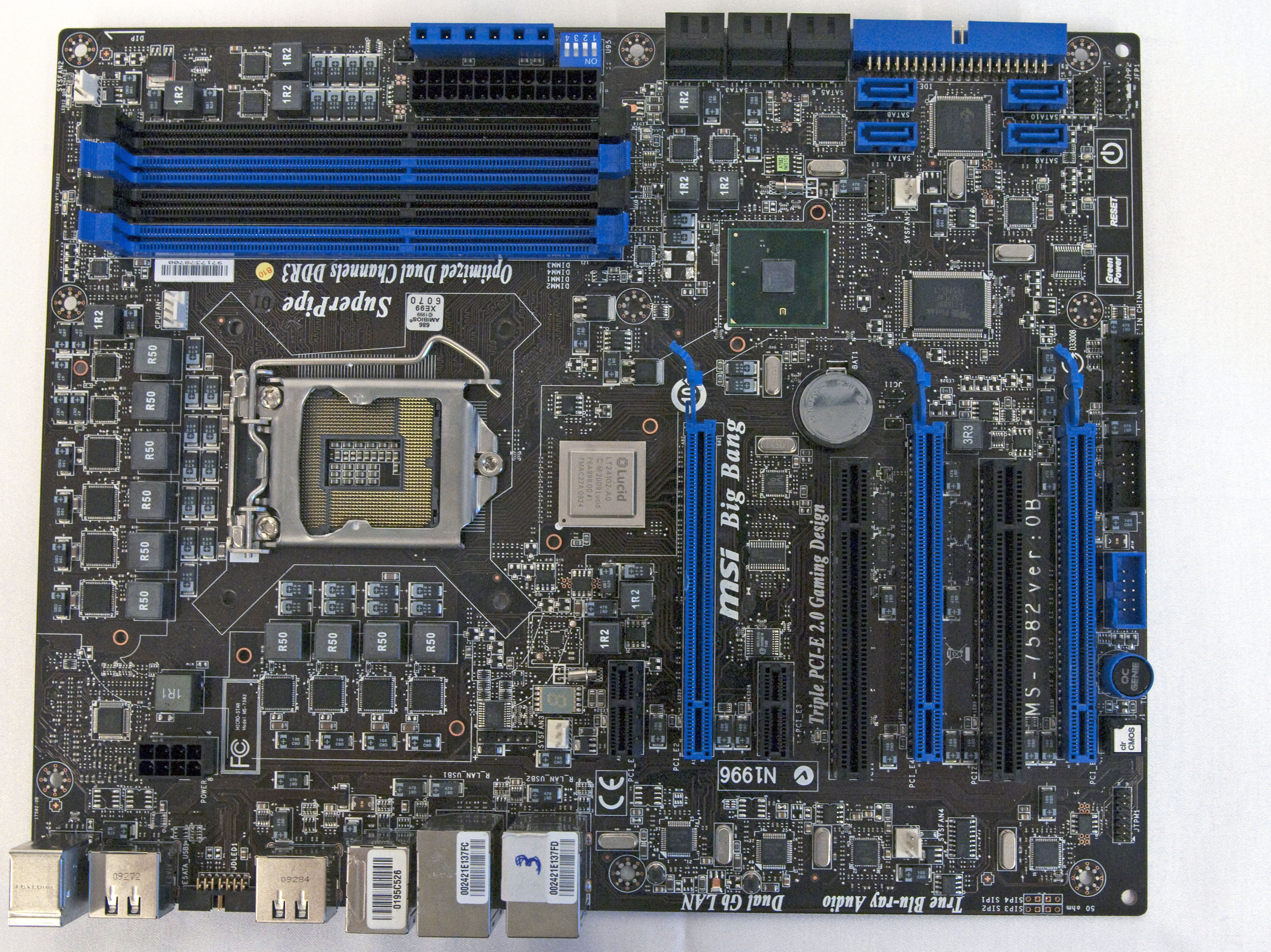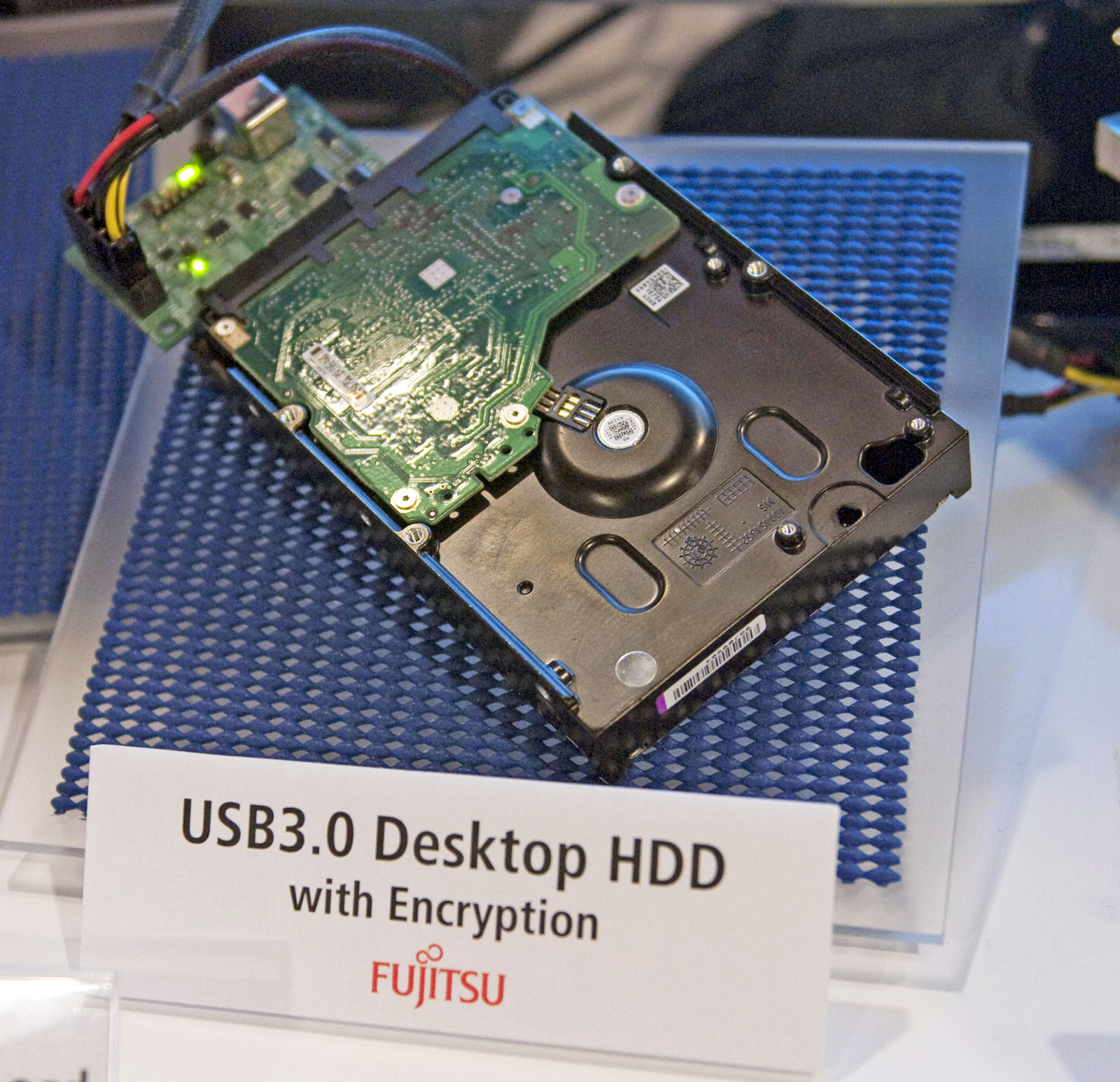Intel Developer Forum, Day Two: 6 Gb/s, USB 3.0, And Lucid
Lucid, USB 3.0, And Infrastructure
The Return of Lucid
Last IDF, Lucid made a splash with a sophisticated, smart PCI Express bridge chip with an embedded RISC processor, designed specifically to enable multi-GPU scalable graphics across disparate GPUs. The message was: mix and match GPUs of differing performance levels and even different manufacturers.
Now Lucid is back, announcing its first design win, with MSI’s “Big Bang” P55-based motherboard. The new board has one of Lucid’s 200-series chips on board. We saw demos of Nvidia and ATI GPUs paired up and scaling graphics performance. One demo, behind closed doors, even showed a GeForce GTX 260 and ATI Radeon HD 4890 not only coexisting on the same Windows 7 system, but actually working together to scale graphics performance beyond what’s capable with a single graphics card. If we hadn’t seen it with our own eyes, we wouldn’t have believed it.
While the technology is very cool, we are a little concerned that the market might be limited. The number of users who actually want to run multiple GPUs is fairly small as it is. Still, from the user perspective, if you have one of MSI’s Big Bang motherboards, when a new GPU comes out, you just add it to your system rather than throw away the old card. You’ll get some benefit by having both available.
USB 3.0 Nears Reality
Already, the first USB 3.0 peripheral has been shown, a high resolution camera from Point Grey. The USB 3.0 Implementer’s Forum was also showing hard drives and optical drives connected via a SATA-to-USB 3.0 reference board developed by Fujitsu. Also on display was an Asus-branded USB 3.0 interface card. With speeds approaching hard drive interface throughput, USB is set to move to a new level, moving large amounts of data at speeds substantially faster than today’s pokey 480 megabits per second.
Infrastructure Makes the Tech World Go Around
Get Tom's Hardware's best news and in-depth reviews, straight to your inbox.
As we noted, new CPUs are great, but you can’t make effective use of them unless the underlying support structures evolve along with the CPU. As we move forward with faster, more capable processors and graphics chips, it’s only natural that interfaces like USB 3.0 and SATA 6 Gb/s help the underlying platform evolve.
What will be interesting to watch is how Intel evolves the platform underneath Atom. Will Atom-based netbooks just disappear, replaced by more capable ultra-low voltage CPUs? Maybe, but only if those new systems cost as little as netbooks. Companies like Via and AMD are waiting to step into any low-cost gap left by Intel if they should overlook the netbook market. But that’s unlikely, as Atom-based netbooks have been something of a savior to the PC industry in 2009.
On the display side, DisplayPort looks to be the biggest thing since DVI, and will usher in a new generation of multi-display technology, thinner displays, and higher resolution graphics.
Even technologies that are built into the CPU itself, like Turbo Boost, will help improve performance, which in turn increases the perceived value of the new generation of PCs. We’ll see if Intel and the industry can effectively communicate those improvements.
-
JohnnyLucky Interesting article. I'm finding it more and more difficult keeping up with all the technology.Reply -
burnley14 It's interesting that USB 3.0, DisplayPort, and Sata 6 would all be coming to fruition at about the same time, since they are all interfaces/portsReply -
battery i'm really looking forward to usb 3.0, not to say that the other techs aren't as impressive, i'm just tired of the depressingly slow usb 2.0Reply
i've always been a fan of display port, definitely gonna pick up a 5870, perhaps an X2..
whats all this boycott intel spam shit? -
apache_lives saljr its 99.9999999% safe to say your typing away on some form of device that has something to do with some form of Intel developed technology - boycotting intel is like burying your head in the sand and saying you dont want better products ever - at the end of the day there the market leaders bringing us new stuff all the time - say thank you if anything :DReply
also thank AMD for competition -
apache_lives batteryi'm really looking forward to usb 3.0, not to say that the other techs aren't as impressive, i'm just tired of the depressingly slow usb 2.0i've always been a fan of display port, definitely gonna pick up a 5870, perhaps an X2..whats all this boycott intel spam shit?Reply
wonder if its compatible and capable of converting back to VGA/15 pin monitors - got two 19's still -
This is interesting!Reply
It's going to bring new challenges to benchmarks, as now you'll need a fixed room temperature to benchmark systems with turbo boost.
Benchmarks tested of the same device, in cold or hot environments could give different results. Something perhaps not noticable with Corei7 machines, but on atom levels a 10 degrees C environment could boost the benchmark by several frames per second over a 35 degrees environment.
I hear all of this, and wished we could already buy a netbook with turbo boost on CPU and GPU, and a netbook equipped with PixelQi's LCD!
Add that to a 6cell battery, that gives 18 hours of battery life, and I'm sold!
Hope those netbooks will stay under $300 though! -
underapew USB 3.0 is soooooooooo needed - speed looks good - is there +12v support, or just +5 - we need an interface that can support 7200 rpm drives with 1 connectionReply


